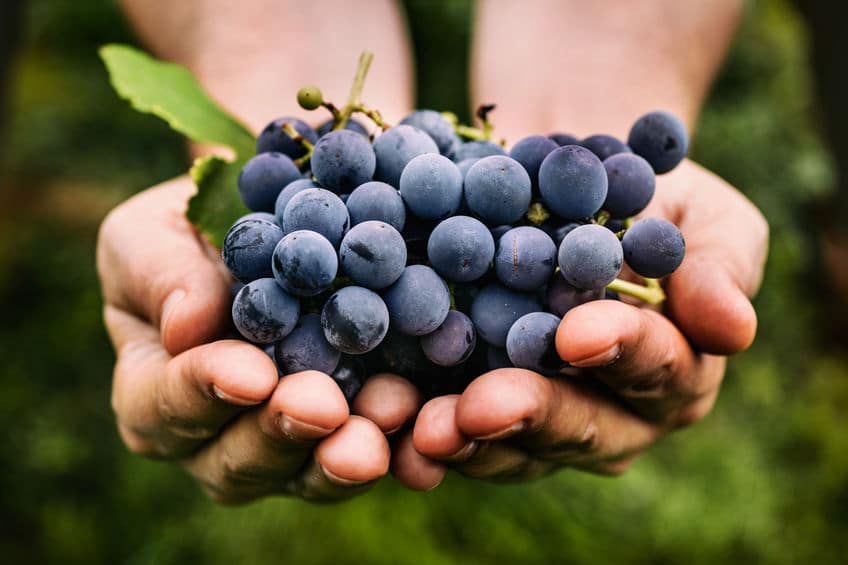By John Salak –
There is a good reason that grapes are referred to as the Queen of Fruits. They are beautiful, luscious, diverse, versatile and powerful. They’ve also been cultivated in one form or another for between 6,000 to 8,000 years depending on who is counting.
There are over 10,000 types of grapes worldwide. Not surprisingly, the vast majority of cultivated grapes (about 70 percent) are grown to make wine. No argument here. The rest are wind up as dried fruit or juicy plots of delight—and that’s where they deliver their biggest health boost.
Ultimately, it’s hard to find something bad to say about the most popular table grapes. Okay, some are sweeter than others and then, yeah, some grapes have seeds. But that’s getting really picky considering the nutritional and other health benefits grapes offer up. There are, in fact, six main table grapes—Thompson, Flame, Concord, Ruby, Moon Drop and Cotton Candy—that come in different shades of green, light red, dark purple, dark red and almost black.
If each grape had a nutritional label is would report that a one cup serving has about 100 calories, 27 grams of carbohydrates, one gram of dietary fiber, 2 milligrams of sodium and 23 grams of sugar.
Just this information would be selling grapes way short. Magazines from Good Housekeeping to Men’s Health can’t stop touring grape consumption, claiming its can do everything from boost immune systems to help loose weight. Researchers at Tufts University went further noting that a healthy diet that includes grapes “can help flatten the COVID-19 curve.”
So, what can you actually squeeze out of a grape? Lots of nutrients to start. One cup provides about 25 of a person’s daily Vitamin C requirements, 20 percent of Vitamin K, and 10 percent of copper. All these vitamins are going to help DNA repair and boost the production of collagen and serotonin. Vitamin C also helps burn fat and Vitamin K helps with bone formation.
There is more for the skeptical that grapes are little more than juicy sweets. They ate loaded with anti-aging antioxidants, all of which supports blood flow, decreases inflammation and better brain function. “The quercetin in black and red grapes has been shown to protect against neurodegenerative diseases, such as Alzheimer’s.” reports health.com
The site went on to report that the melatonin in grapes aids sleep, while the lutein and zeaxanthin does wonders for vision support.
Still not convinced that grapes are chocked with benefits. Well, besides fighting cancer, reducing inflammation, supporting a healthy heart and steadying brain and memory function, among other things, grapes also make people look great. The resveratrol in grapes is a boon for the skin and also prevents other signs of aging.
Stylecraze.com, in fact, claims that the antioxidants in grapes are “50 times more powerful than Vitamin E and 20 times more powerful than Vitamin C. This helps to protect the skin from pollution and toxin damage.”
Ultimately, it’s all hail to the Queen of Fruits. Grapes taste great and they make us look and feel a whole lot better.













